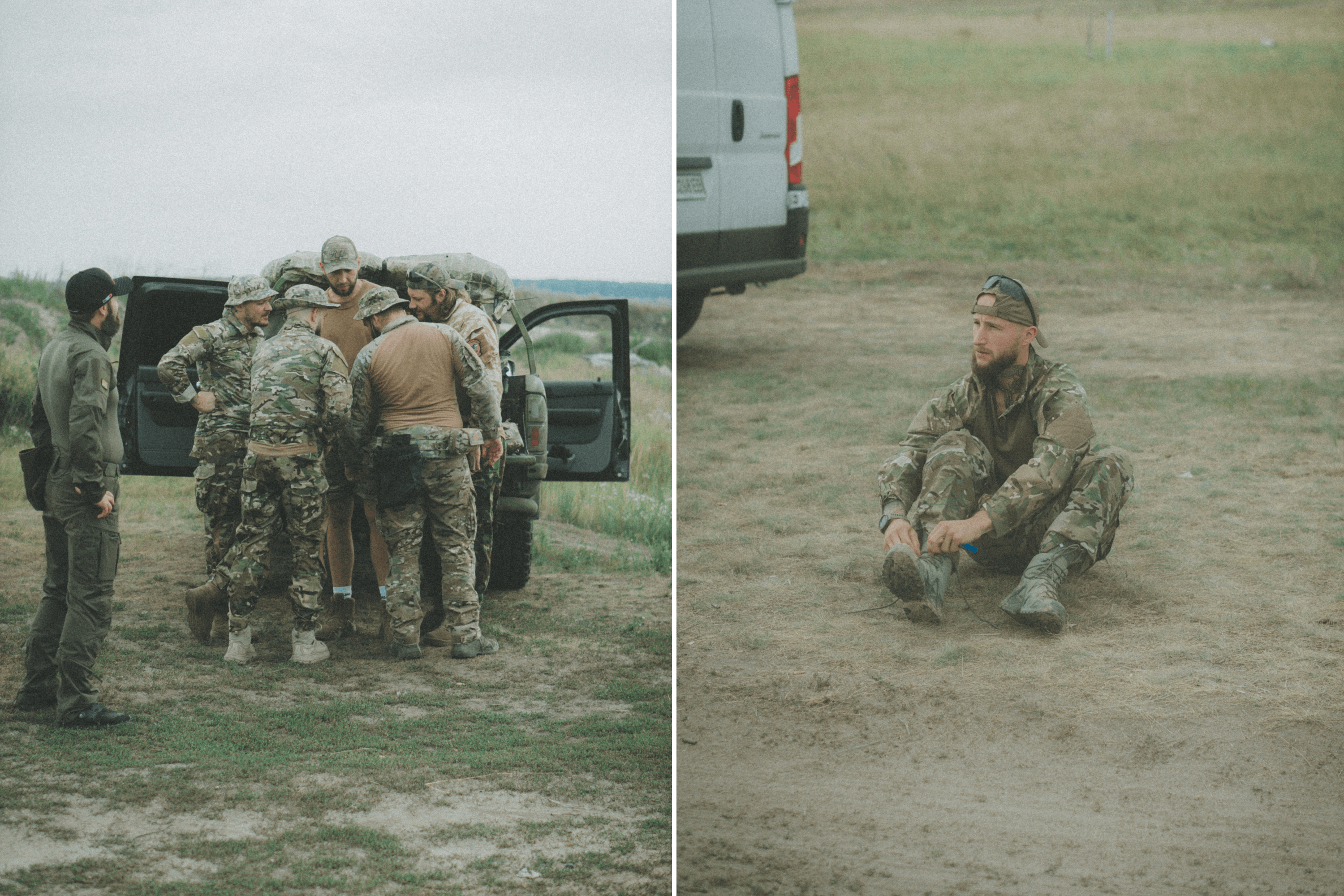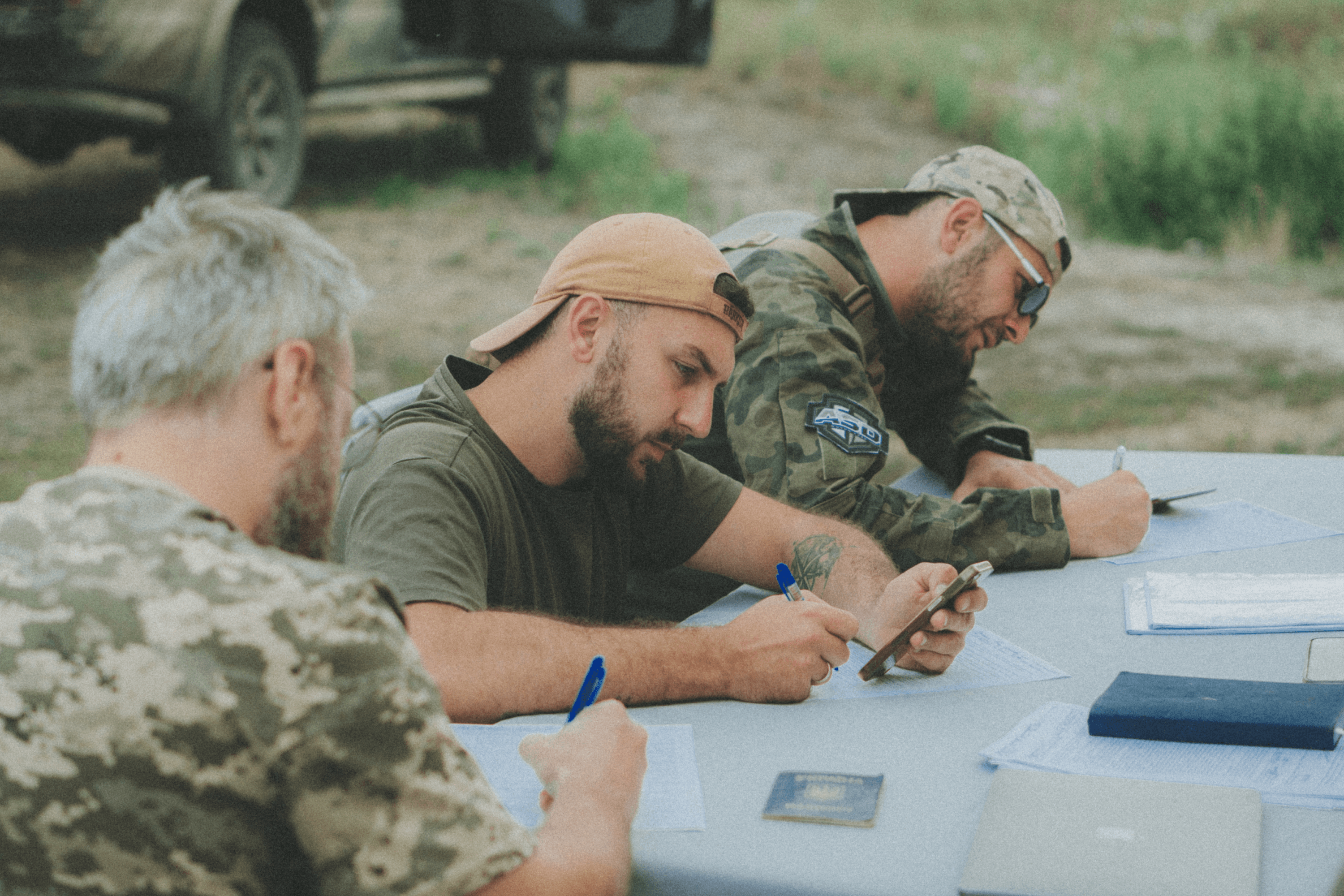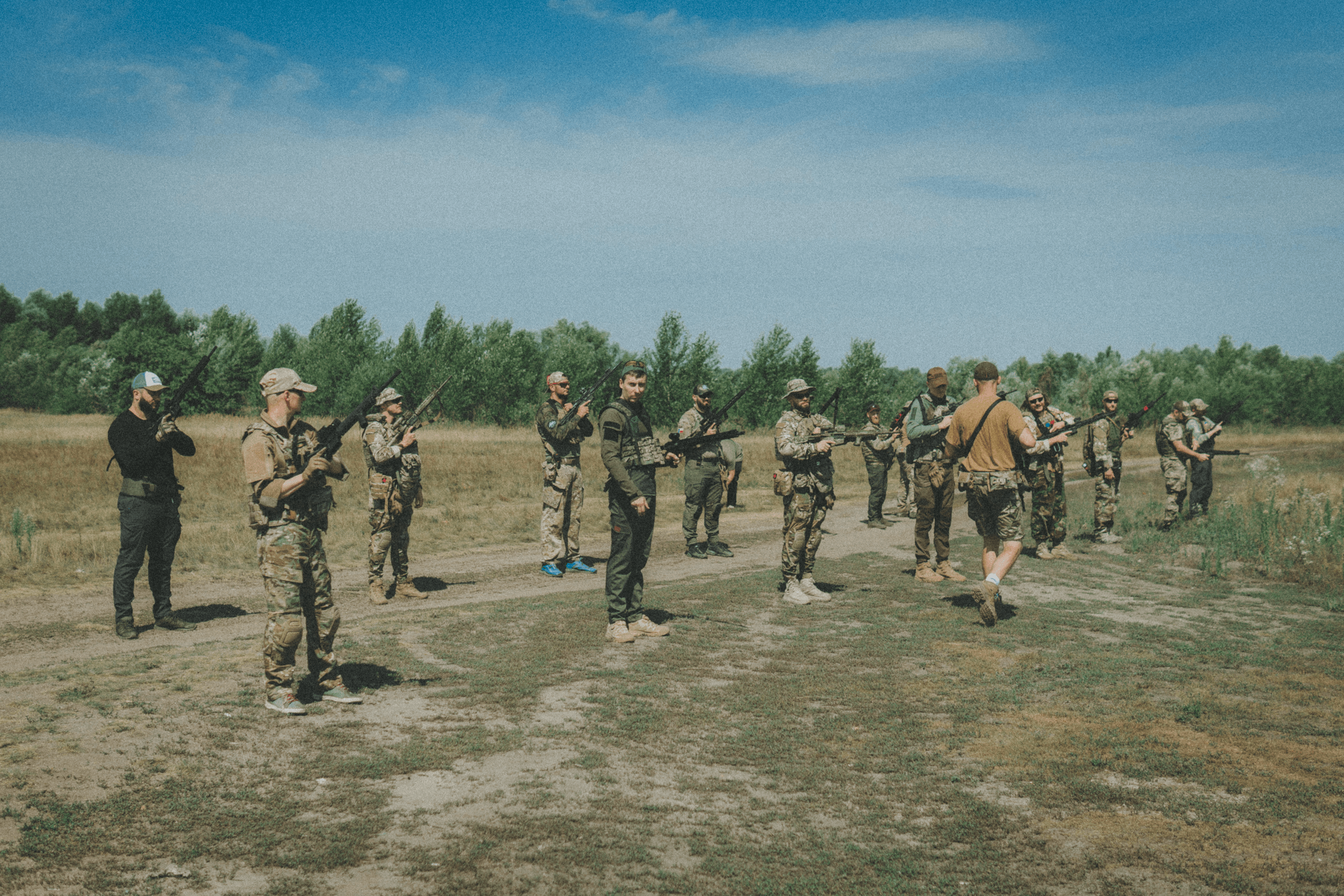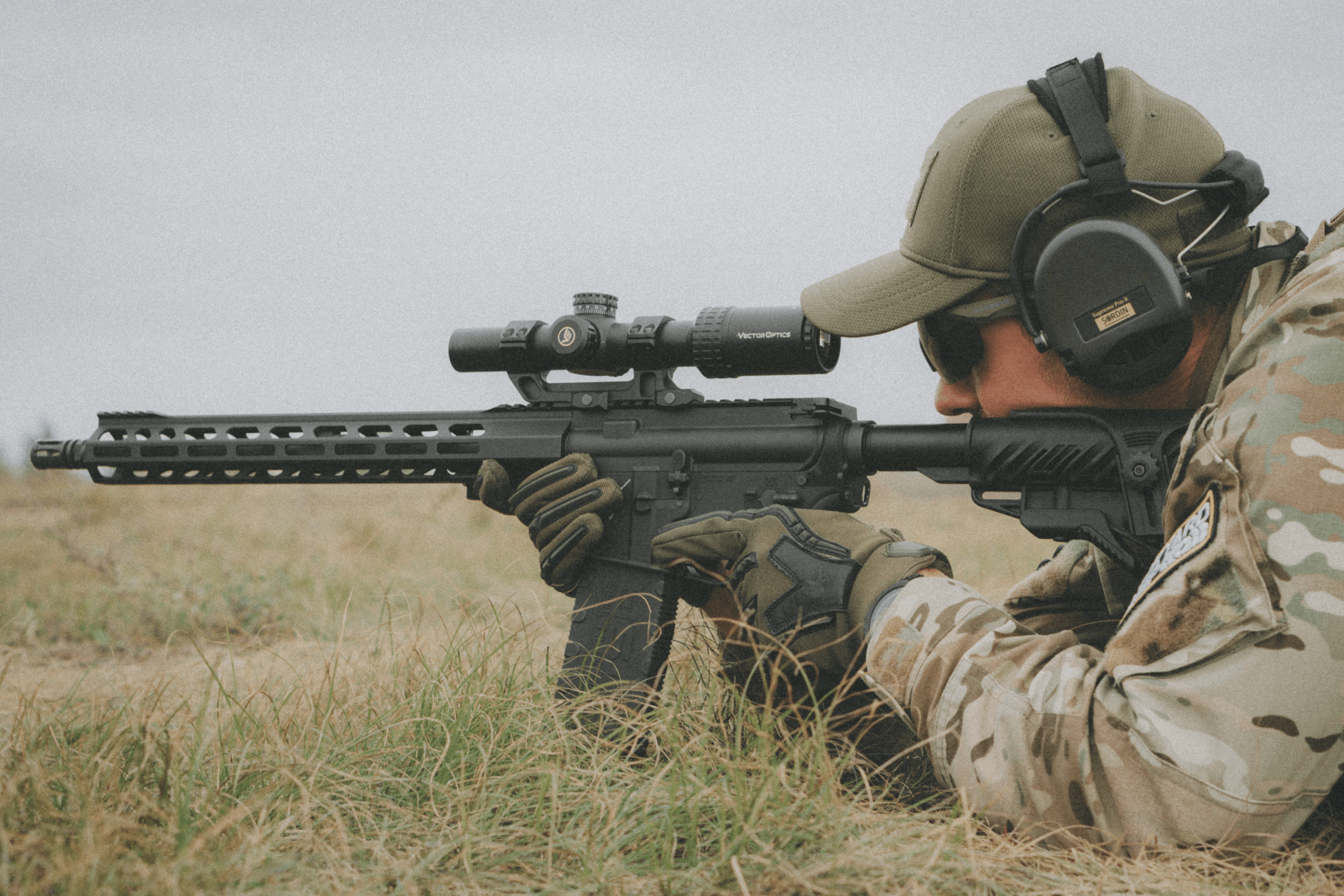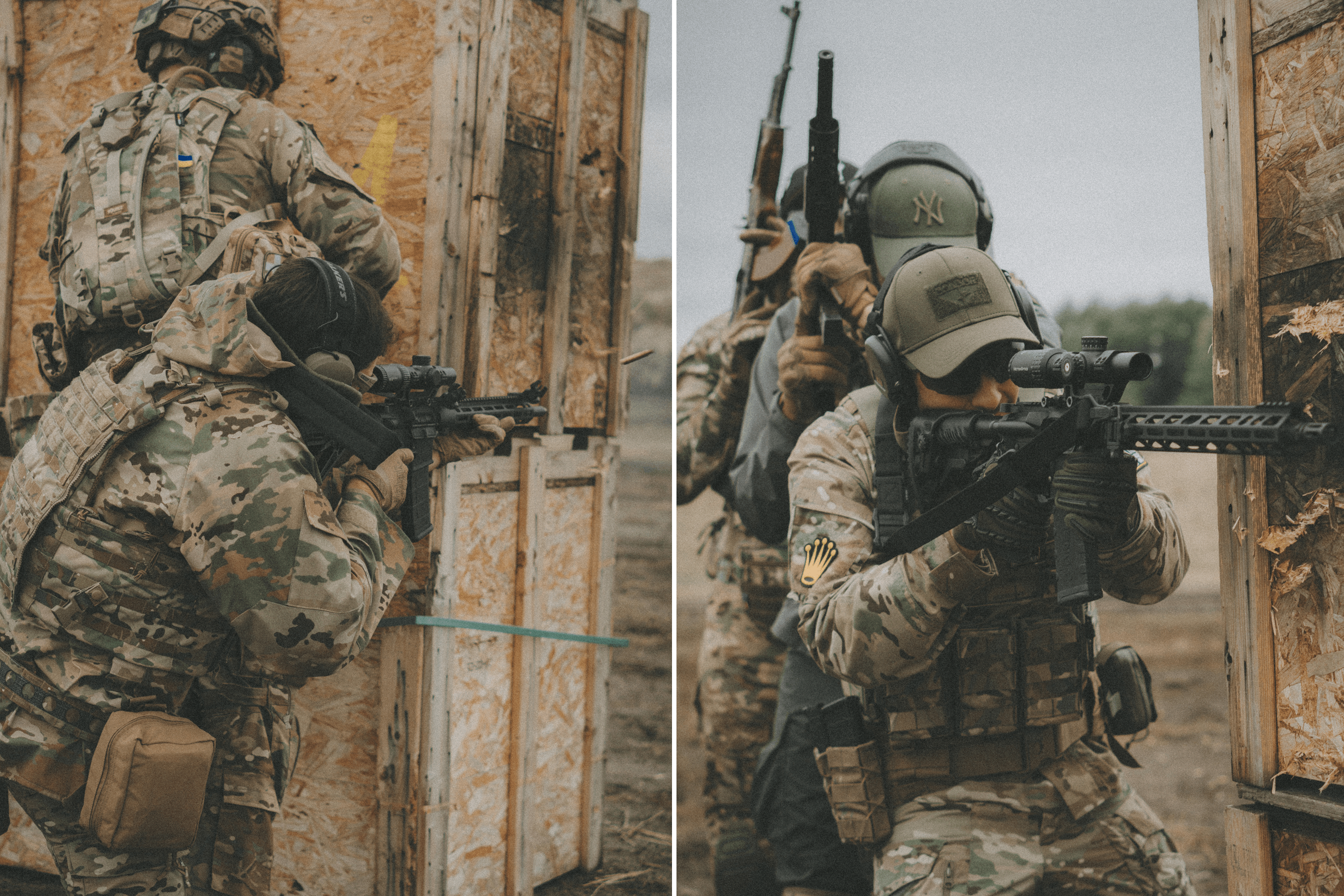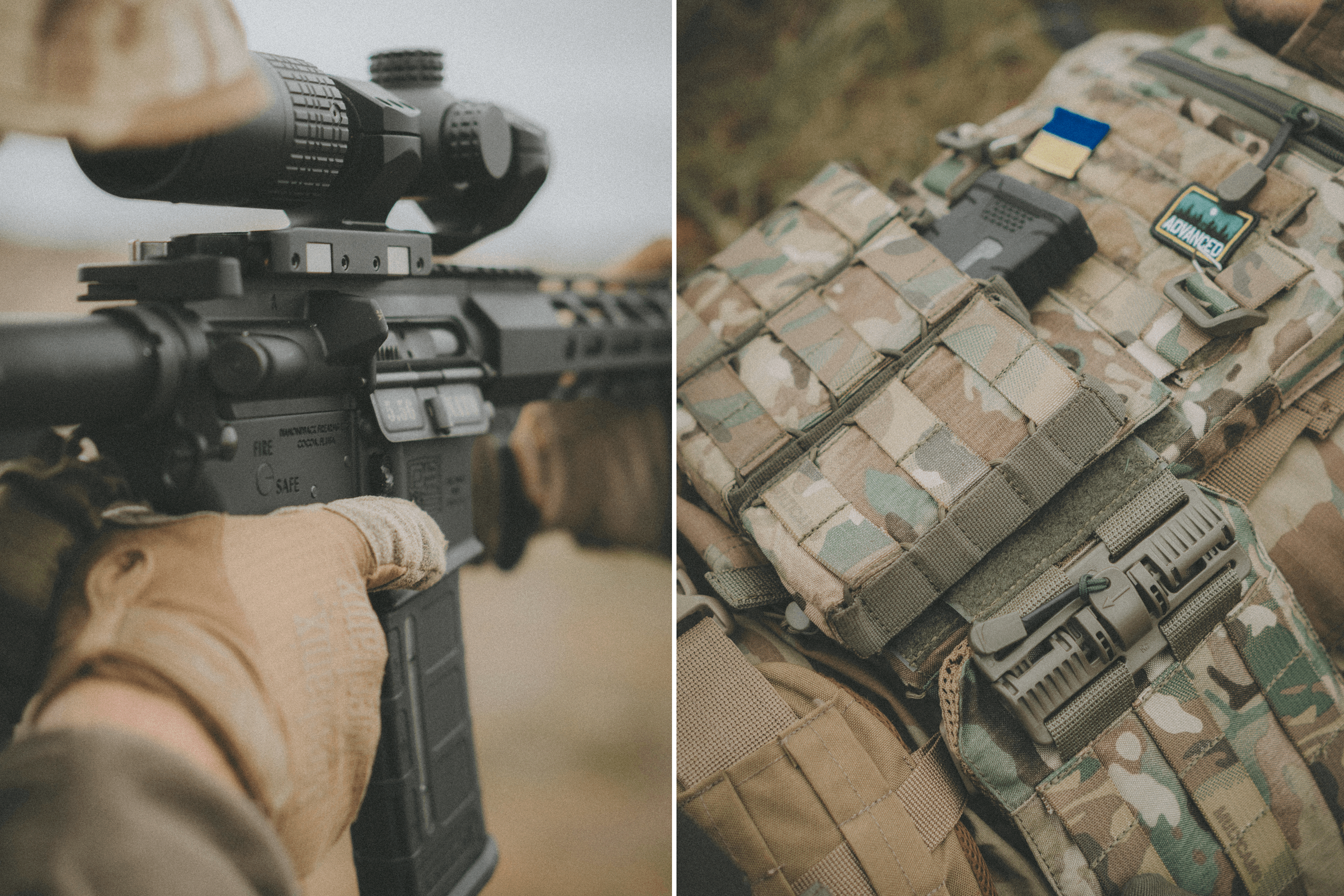Artem Veselov used to work in the field of financial technologies and consulting, ran several IT projects. But since the first days of the full-scale invasion, he volunteered for the Ukrainian Armed Forces, fighting in the Kyiv region in the ranks of the Territorial Defense Forces. In the summer of 2022, Veselov founded the first Backyard Camp military training center. At that time, Russian troops had already been expelled from the North of Ukraine, but the war was only gaining momentum.
Artem found foreign instructors from the US Navy SEALs special unit, the French Foreign Legion, and the Israel Defense Forces, who were ready to train anyone willing to learn. At first, these were chaotic trips to the training ground, without any system. Later, Veselov brought order to the process: he started offering regular courses and enrollment. This marked the beginning of the first Backyard Camp and the idea of its scaling. Now Artem is preparing to open another center in Volyn. This center should serve as a benchmark to determine if similar centers can be scaled up across Ukraine.
YBBP platform journalist Artem Moskalenko met with the co-founder of the Backyard Camp strategic cooperation and defense training centers and asked about the possibilities of scaling this project to the entire country, as well as whether Ukrainian military experience can be a competitive product for export.
How did you start Backyard Camp?
During the Battle for Kyiv, where I was involved, the urgent need arose to train new soldiers. There were a lot of them at the beginning of the full-scale invasion. Simultaneously, we received word from foreign specialists, particularly SEAL veterans, that they were ready to train the Ukrainian resistance for free.
We decided to combine the need and the opportunity. I secured a training location and invited everyone who wished to participate. My partner Dmytro and I realized that there were many such people, and we decided to systematize our work: we began to sign up for training sessions and conduct them with a certain frequency. This is how Backyard Camp was born in June 2022, although it didn't have that name at the time.
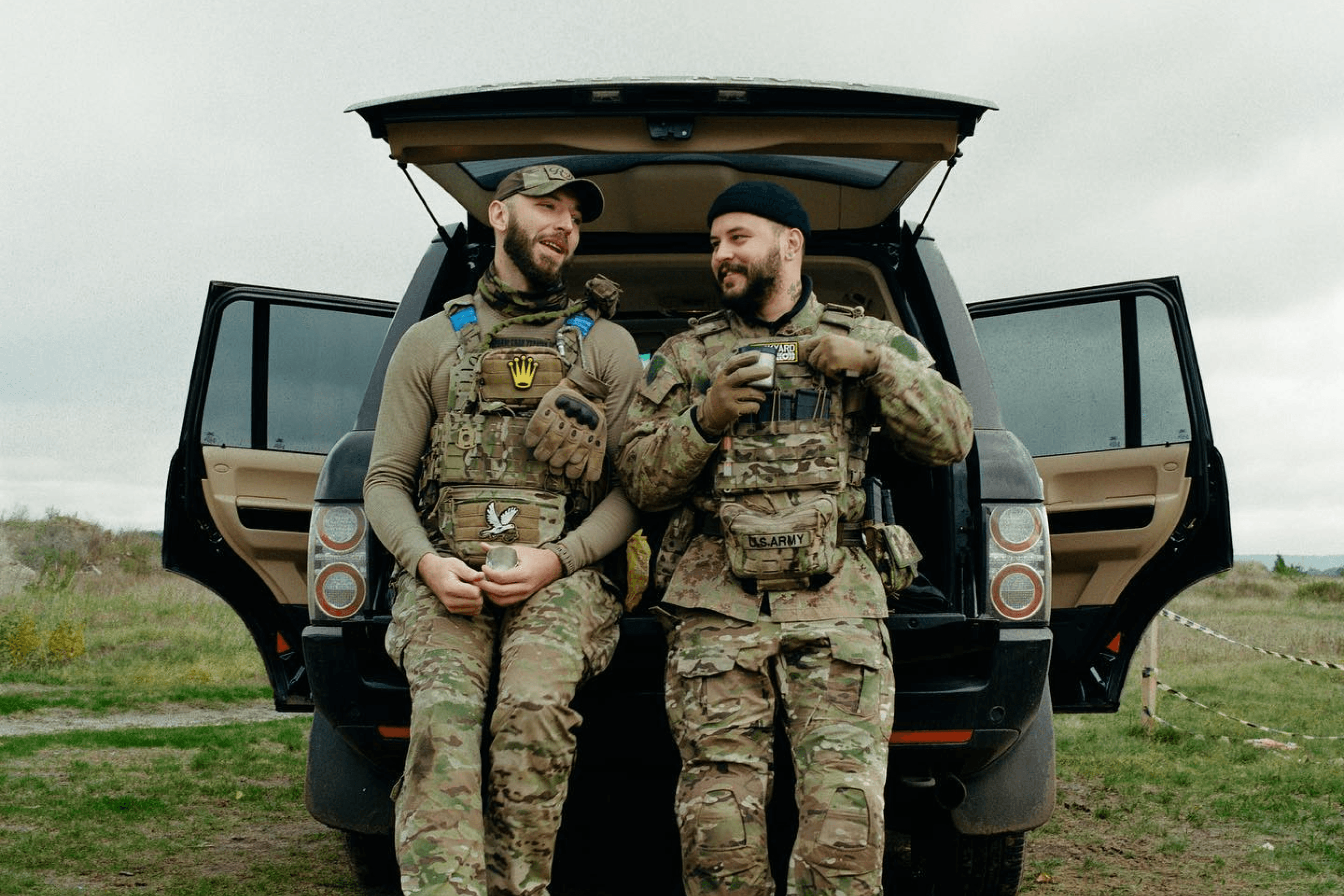
Where did you find the money for this?
Everything started at a relatively low budget. It was my partner's and my own money, a considerable sum for us. I can't say exactly, but it amounted to tens of thousands of dollars. We immediately developed a model, under which training for the military is completely free, and only civilians pay. The price for them is also small — $100 for two days. This pays for 18 hours of training with instructors, food, and accommodation if there is a need for it. And we reinvested all the income in the camp: we bought equipment and developed the infrastructure. The income also covered the instructors' salaries.
How do you finance the camp now? Does this model remain self-sustaining?
Yes, it is not profitable, but it is self-sustaining. That is, I do not take a salary or any dividends from it. We spend all the funds paid for the training courses on the camp — covering instructor pay and organizing subsequent courses. We have an agreement to use the training grounds for free, but they still require maintenance.
What exactly do your courses involve?
The foundation of all our courses is Basic Camp, which introduces people to military affairs. There participants learn how to use a weapon: the basic rules of handling it, its configuration, and practicing movement skills. Different instructors teach this in different ways, so often participants of our trainings visit several Basic Camps to understand who is better for them to work with.
Then, participants gain access to systematic weekly training and to the next, more challenging camps, which already require fundamental knowledge and proficiency. We also have a format called Special — these are camps dedicated to one specific topic. We often involve military units and even special forces in them. It could be a trench-only training day, for example. We held one of the last such camps together with Azov, it focused on ground robotic vehicles. Our next Special will be on working with armored vehicles. This format is available to all members of the Backyard Camp community. It doesn't matter if you are military or a civilian—if you have passed Basic, you are part of the community, and all our events are open to you.
One of the features of your courses is foreign instructors. Where do you find them?
It's all thanks to networking. I'm a soldier and have worked with representatives of the International Legion [in the Ukrainian Defense Forces]. There I found people who wanted to become instructors and teach the Ukrainian resistance.
Do you still have enough personal connections to look for new instructors?
Clearly, there are fewer professional instructors now. At the same time, actually, fewer foreigners come here who sign contracts with the International Legion. But, for the most part, my connections suffice. And the connections of the instructors themselves also work — when one can bring his compatriot to the role of a new instructor.
Do you use exclusively foreign instructors or Ukrainian ones as well?
For a long time, we worked only with foreigners, because their qualifications are higher. For example, the American military school provides a very good base, probably one of the best. Their basic skills are honed to the last millimeter. But now, of course, we cannot help but involve the Ukrainian military — the ones who have extensive combat experience. This is the main criterion.
The same applies to foreign instructors: all of them are combat veterans of the Russo-Ukrainian war. They have the standards by which they were taught, but at the same time they understand what's happening on the front line and adapt the standards they brought from their countries to the modern realities of war. They themselves understand which things still work and which need to take new challenges into account.
How do you motivate foreigners to work with you?
We pay them wages, but this is obviously not the main driving factor. Their primary motivation is the underlying idea. The sense of mutual assistance intensifies during wartime. And the very idea of providing quality training and passing on their experience is enough to motivate them. In the long run, this also helps them: today they can train soldiers who may be fighting in the trenches right next to them tomorrow.
How many people have passed through your courses in these three years?
We have had approximately 3,000 course attendances. This means that people have taken our courses three thousand times—some once, some several times.
Do events at the front line affect the number of volunteers?
The impact is direct: fewer missiles mean fewer people. The further the front line is, the fewer people we see, and vice versa. The news about the negotiations also, of course, has an impact. In our country, the majority of the population is, let's say, a segment that is vulnerable to information manipulation. And it affects people's motivation. Although there are those who understand: it doesn't matter if the war will end tomorrow, in a year or even in 10 years. Living here, you must always be prepared. However, this is the minority.
In fact, your courses are an alternative to Basic Military Training [which the Ukrainian army provides]. What's wrong with it?
In its current form, it is far from ideal. Unfortunately, 85% of it still adheres to the old Soviet approach. For example, the number of rounds fired by the guys at our camps in two days is twice as much as that fired during the Basic Military Training, which lasts 1.5 months. And the shot count is the most important thing for a shooter. It's crucial for them to have systematic and consistent practice. The same applies to tactical medicine. It is important to practice this many times. Of course, the state does not provide full-fledged training with drones. But it's something that has a huge impact on the battlefield. That is, first you need to provide solid foundational knowledge, identify a person's strengths, and then highlight their inclination towards certain positions.
I talked about these problems with the members of the former team in the Ministry of Defense, and presented them with my concept of camps. I clearly understand what it takes. This is actually a small amount of funding within a country where there is a war going on on a very long front with a large number of people involved in it, and which mobilizes up to 30,000 people every month.
Are you talking about scaling Backyard Camp to the size of the entire country and replacing Basic Military Training?
Yes, absolutely. All that is needed for this is a will. We hear from local authorities and civilians that our camps are effective and provide good training, but the state has not expressed interest. Maybe there are other priorities now. Therefore, we decided to change the training, starting with ourselves.
We have a firm position in this regard. If the state comes and says: "Help us", we say "Yes", and that for this we need the following funding, time, the necessary and plots, and compensatory costs for instructors' salaries. These instructors can be military personnel with injuries or decommissioned servicemen.
We have the expertise to run such a system. My idea is not to train individual people, but entire units. For example, when there is a shortage of people in a company or battalion, they are now selected individually. But I see it differently: gather an understaffed company in one center for a month or a half, assign it a commander with combat experience, and have them undergo training together. Then a cohesive unit is formed, ready to immediately take its place on the battlefield.
This is not new knowledge, but a practice that has existed for decades in Israel, Switzerland or New Zealand. For example, in Switzerland, everyone must serve 265 days over ten years— and everyone receives a weapon, a uniform, and an understanding of their own function.
There is one more aspect that can improve the mobilization process: we must create a military culture that was almost non-existent in Ukraine by 2022. Yes, now there is a certain wave of popularity [of the army], but this is not enough — we need to make sure that people really immerse themselves in this culture and feel that service in the army can be both prestigious and interesting. We see how it works on the example of our camps: when we show that the military is interesting, 60-70% of graduates join the defense forces. Although our audience is mostly people with higher education and higher-than-average income. But after our camps, they still choose the army. The rest are people also connected with the war: rescuers, engineers in defense industries, and volunteers.
You give your expertise to the state, but do you get something from it in return?
No, we do not receive any state aid. Zero state funds were spent on the creation and development of our project. Absolute zero.
You are planning to expand and open a new training center in Volyn, what will it be like?
We want to open a training ground in Volyn, which will become a benchmark — a model that can be reproduced in any other part of Ukraine. That is, we are developing a project that shows how such a training ground should be built, how much it will cost, what documents are needed for this, which licenses and certificates are needed, what the training program should be, and so on. And then we plan to spread this knowledge as a franchise.
This project will be more serious. There will be an administrative building with lecture halls, checkrooms, a small food court, a store, and full-time instructors. There will be not just dug-up shooting ranges or tents, but two shooting ranges and a full-fledged obstacle course. We have already found a site that meets all safety standards, are finalizing the estimates, have almost found contractors, and are waiting for construction to begin.
Are there already people interested in such a franchise?
No, not yet. But this is precisely why we are opening the center in Volyn. Its mission is to demonstrate the viability and effectiveness of this model.
How much will you increase the number of people taking your courses after opening another training ground?
If we were opening this as a business, then I could answer your question with certainty. But we are primarily opening this center as a base location that can serve as an example and gather people around us. We will wait and see how many people are willing to participate. I think that there will be fewer of them than in Kyiv: the farther from the war, the less, let's say, the impetus for such knowledge. But our task is to develop and launch this culture.
Will this new center earn for itself the same way as the one in Kyiv?
Ideally, yes. We want civilians to train, attend events, make purchases at the store, and have this allow us to maintain the center. That is, we have planned for a revenue generation process. This money can be used to maintain the training grounds, make minor repairs, and pay instructors. If it works out like this, it will be perfect. But I anticipate that for some time, perhaps a considerable period, it will require external financing. For now, this is a subsidized project.
Have you considered turning Back Yard Camp into a commercial venture?
We really thought about this a lot, because the business approach brings discipline, so it would help us. Perhaps in the near future, instead of completely free training for the military, we will make it only partially free, if we simply lack the resources to support the centers' operations. But in general, this business cannot currently be profitable or recoup the investment while maintaining the same high level of service we now provide. It is expensive, and there are only a few people who understand the importance of quality training and are our potential customers.
Is it possible to enter international markets with such experience and open similar centers in Europe or America?
In Europe it's absolutely possible. This is one of the areas we are also thinking about. The Backyard Camp model could be of interest to Poland, Latvia, Lithuania, Estonia, Eastern Europe, as well as Scandinavia. It's necessary to prepare for war, and everyone understands that it should be done in this format—by developing training grounds with a robust teaching program. The situation is different with the USA. There, the military and weapons culture is much more developed than in Eastern Europe. They have a lot of private entities with such events and teachers — there are enough of them. I'm not sure about Asia: they have their own specific weapons culture. Therefore, our model can be interesting in Eastern Europe, I think.
What Ukrainian experience can be useful abroad?
Of course, these are drones, they are of interest to everyone. This is evident in every conversation with foreign partners. They have expertise in marksmanship, more or less. It is not difficult to master. But technologies, drones, their implementation, tactics of use are an important aspect. That's what they're watching, and we can provide that expertise. They are also interested in our tactics for fighting in closed or limited spaces, such as clearing buildings. Additionally, foreigners see that some of their training exercises need to be revised, and that motor skills need to be changed.
How serious are your thoughts about entering foreign markets?
For this, you need to spend a lot of time and have good and interested partners. I'm ready to meet with potential partners, discuss concepts, provide data, launch these processes, and perhaps even hire people, specifically our veterans. But I also need interest from the other side, and I don't really see it.
I spent the entire summer in Riga being healed. There is a large Russian diaspora there, 250 km of the border with Russia, and the issue of potential Russian attack is very relevant to them. There, too, the opposition is pushing the language issue. It's a lot like Ukraine before the full-scale invasion, but they're all relaxed there.
This mood is given to them by NATO membership. But everyone forgets that there is a NATO doctrine that says: a country attacked by non-aligned countries must continue its own defense for three days. This time is needed for the NATO troops to deploy and continue defending the attacked country. But I understand objectively that in three days, unfortunately, such a small country as Latvia can be occupied.
And then we would again hear the story about the Russian-speaking population, cultural values, and the large Russian diaspora in Latvian territory that needs "protection." If these territories are occupied, I'm not sure that with the people currently presiding over NATO and some members of the Alliance, they will decide to de-occupy these territories at all. I don't think that there will be any radical actions in such a case. But people in Latvia do not see it that way.
Is this laxity you speak of felt at the level of society, business or government?
It is general, at all levels. It cannot be that society is unaware while the state is, or vice versa. This is general complacency.
But still, why should everyone in Ukraine or neighboring countries go through military training like Backyard Camp?
Because we've seen a lot of consequences when people don't have this training. In particular, this includes the atrocities in the Kyiv region, specifically Bucha, Irpin, and other Ukrainian cities. I believe that if the men there had such experience and knowledge, we could significantly reduce these losses, and perhaps even avoid them altogether. That is, if I know military affairs, my friend knows military affairs, three neighbors as well, and about 20 other people on the street, and we have weapons and the knowledge of how to use them, and we understand how to coordinate—that is already power. When the enemy is near, you must be prepared to save the blood of your people. Regardless of whether you are Estonian, Polish, German, or Ukrainian.



